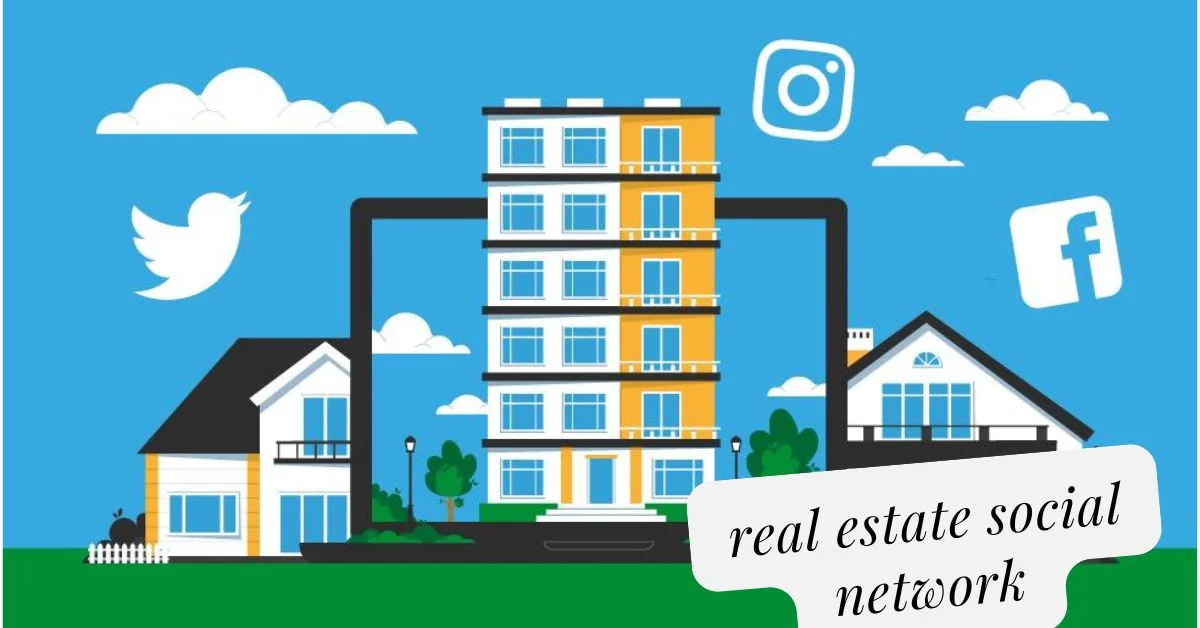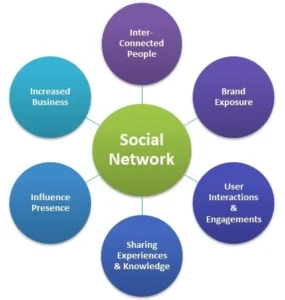Real Estate
Unveiling the Mystery: Exploring the Enigmatic Concept of a Speakeasy

Step back in time to an age of secrecy and rebellion, where hidden doors and whispered passwords led you to a world unknown. Welcome to the enigmatic realm of speakeasies – clandestine establishments that flourished during the Prohibition era in the 1920s. These elusive havens were born out of a need for escapism, offering patrons an opportunity to indulge in forbidden pleasures behind closed doors. Today, speakeasies continue to captivate us with their allure of mystery and intrigue. In this blog post, we will delve into the fascinating history, varieties, and charm of these underground drinking dens. So grab your fedora or flapper dress, as we unveil the secrets behind the captivating concept of a speakeasy!
Early Speakeasies
During the Prohibition era in the United States, from 1920 to 1933, speakeasies emerged as hidden gems amidst a sea of temperance. These were underground establishments that operated secretly, evading the watchful eyes of law enforcement. The term “speakeasy” itself originated from the need to speak quietly or “easily” when discussing these illegal operations.
In dimly lit basements and secret back rooms, early speakeasies became vibrant hubs of social activity. Patrons would gather to enjoy live jazz music, dance feverishly, and savor forbidden libations flowing freely despite their illegality. The atmosphere was one of rebellion and camaraderie – a haven where individuals could let loose and forget about the harsh realities imposed by Prohibition.
Speakeasies often relied on intricate systems for entry and exit to maintain secrecy. Hidden entrances disguised as inconspicuous storefronts or unmarked doors added an air of mystery to these clandestine establishments. A knock on a particular door with knowledge of a secret password was often required for admission into this hidden world—a subtle nod towards exclusivity while simultaneously safeguarding against unwanted attention.
Low-Key Dates
Looking for a unique and intimate date night experience? Skip the traditional dinner and movie routine and opt for something with a touch of mystery. Enter the world of speakeasies, where low-key dates take on a whole new level of excitement.
Picture this: you and your partner stepping into a hidden bar behind an unmarked door. The dimly lit ambiance, cozy seating, and live jazz music create an atmosphere that instantly transports you back to the roaring 1920s. Sip on handcrafted cocktails while whispering sweet nothings in each other’s ears.
Unlike crowded mainstream bars, speakeasies offer an intimate setting that allows couples to truly connect without distractions. With their secret entrances and discreet locations, these hidden gems provide a sense of exclusivity that adds an air of adventure to any date night.
So why not ditch the ordinary and embark on a journey through time with your significant other? A low-key date at a speakeasy promises unforgettable memories shared in secrecy – just like those who frequented these establishments during Prohibition.
Nostalgia
Nostalgia is a powerful emotion that can transport us back to a simpler time, evoking memories of the past. When it comes to speakeasies, nostalgia plays a significant role in their allure and popularity. Stepping into a hidden bar with dim lighting, vintage décor, and jazz music playing in the background instantly transports you to the Roaring Twenties.
The charm of these secret establishments lies not only in their clandestine nature but also in their ability to recreate an era long gone. The bartenders dressed in suspenders and bow ties expertly mix classic cocktails like Old Fashioneds and Sazeracs, further adding to the nostalgic ambiance.
For those who are fascinated by history or simply yearn for a taste of another time, visiting a speakeasy provides an opportunity to experience firsthand what life was like during Prohibition. It allows us to escape from our modern-day worries and immerse ourselves in an atmosphere filled with mystery and intrigue – all while sipping on carefully crafted libations that harken back to yesteryear.
Contacting a Speakeasy
Contacting a Speakeasy can be an intriguing experience, as these hidden gems often require some effort to find and gain entry. The allure lies in the secrecy and exclusivity associated with these clandestine establishments. To make contact, you may need to venture into the world of password-protected websites or discreet phone calls.
One way to access a speakeasy is through a secret online portal where you’ll find information about upcoming events and instructions on how to secure your spot. These virtual hideaways create an air of mystery, heightening anticipation for what awaits inside. Another option is reaching out by phone, but don’t expect straightforward directions! You might have to solve riddles or answer trivia questions before being granted entrance.
It’s important to remember that speakeasies prioritize privacy above all else. When contacting them, be respectful and follow their guidelines precisely – failure to do so could result in being turned away at the door. Once you crack the code and successfully reach out, prepare yourself for an unforgettable evening filled with delicious cocktails, live music, and an ambiance reminiscent of a bygone era.
Modern-day Speakeasies
In today’s world, the allure of a hidden bar tucked away behind an inconspicuous facade still captivates many. Modern-day speakeasies have emerged as a tribute to the rebellious spirit of their Prohibition-era ancestors. These covert establishments offer patrons a chance to step back in time and indulge in the secrecy and excitement that defined the original speakeasy culture.
Entering a modern-day speakeasy is like stepping into another era. Dimly lit interiors, vintage decor, and bartenders dressed in period attire create an ambiance that transports guests to the heyday of clandestine drinking. The attention to detail is remarkable – from secret entrances disguised as phone booths or unmarked doors, these hidden gems add an element of mystery and intrigue to any night out.
While some modern-day speakeasies stay true to their roots by serving classic cocktails with authentic recipes, others take creative liberties by offering innovative concoctions infused with unique ingredients. The focus remains on quality craftsmanship and personalized service, making every visit feel exclusive.
The resurgence of speakeasies reflects our collective fascination with nostalgia and escape from everyday life. Whether it’s for a romantic date night or simply seeking adventure in discovering hidden gems around town, stepping into a modern-day speakeasy offers a thrilling experience that combines history, mixology mastery, and unparalleled charm – all while keeping alive the enigmatic legacy of those who once whispered “passwords” at secret doorways centuries ago.
The Popularity of Speakeasies
Speakeasies have experienced a surge in popularity in recent years, capturing the imagination of many who seek a taste of the past. These hidden gems offer an escape from the ordinary and transport patrons back to the Prohibition era. The allure lies not only in their secrecy but also in the sense of exclusivity they provide.
With their dimly lit interiors, vintage decor, and expertly crafted cocktails, speakeasies create an ambiance that is both mysterious and alluring. They invite visitors to step into another time and indulge in a bit of nostalgia while sipping on carefully concocted libations. This combination of history and craftsmanship has made speakeasies highly sought after destinations for those seeking a unique night out.
The rising popularity of speakeasies can be attributed to their ability to offer something different from traditional bars or clubs. In today’s fast-paced world, where everything seems easily accessible at our fingertips, stepping into a hidden speakeasy provides a sense of adventure and discovery. The exclusivity factor adds to its appeal as guests feel like they are partaking in something special, away from the mainstream scene.
The Origins and Etymology of Speakeasies
Speakeasies have a rich and intriguing history that dates back to the Prohibition era in the United States. The term “speakeasy” itself is believed to have originated from patrons being asked to “speak easy” or keep their voices down inside these covert establishments. The word also references the need for secrecy, as alcohol consumption was illegal during this time.
During Prohibition, which lasted from 1920 to 1933, speakeasies became popular gathering places where people could socialize and enjoy alcoholic beverages away from prying eyes. These hidden venues were often located in basements, behind unmarked doors, or disguised as other businesses such as soda shops or flower stores.
The etymology of speakeasies reflects not only the clandestine nature of these establishments but also the rebellious spirit of those who frequented them. It represents a time when individuals defied authority and found creative ways to indulge in forbidden pleasures. Today, speakeasies continue to evoke nostalgia for an era defined by secret codes and hidden delights that captivate our imagination.
Varieties of Speakeasies
Speakeasies come in various shapes and sizes, each with its own unique charm and atmosphere. From covert basement bars to hidden entrances disguised as bookshelves, speakeasies offer a range of experiences for those seeking something off the beaten path.
One type of speakeasy is the classic 1920s-style establishment. These venues transport patrons back in time with their vintage decor, jazz music, and flapper-inspired cocktails. The dimly lit space creates an intimate ambiance perfect for sipping on a crafted cocktail while enjoying live entertainment or engaging in lively conversation.
Another variety is the modern-day reinterpretation of the traditional speakeasy. These establishments often feature innovative mixology techniques and experimental flavors that push the boundaries of what a cocktail can be. With contemporary design elements and cutting-edge technology, these speakeasies provide a fresh take on the concept while maintaining an air of secrecy.
There are themed speakeasies that cater to specific interests or eras. Whether it’s a Prohibition-era hideaway complete with secret passwords or a tropical paradise serving exotic tiki concoctions, these themed speakeasies allow guests to fully immerse themselves in a different world for an unforgettable evening.
No matter which type you encounter on your journey through hidden bars and clandestine drinks spots, one thing remains certain: each offers its own distinctive experience that will leave you longing for more secrets to uncover!
Famous Speakeasies in History
From secret entrances to hidden backrooms, speakeasies have long held a place in history as underground havens of rebellion and indulgence. Some speakeasies became legendary for the famous names that graced their dimly lit halls. One such iconic establishment was The Cotton Club in Harlem, New York City. This hotspot attracted some of the biggest names in jazz, including Duke Ellington and Louis Armstrong.
In Chicago, The Green Mill Cocktail Lounge stood as Al Capone’s favorite haunt during Prohibition. With its cozy booths and vintage decor, it still exudes an air of old-world elegance today. Meanwhile, Los Angeles boasted The Good Time Tavern, frequented by Hollywood stars like Clark Gable and Humphrey Bogart.
These historic speakeasies were not only places to enjoy music or rub elbows with celebrities; they were symbols of defiance against restrictive laws and social norms. Despite the constant threat of raids from law enforcement, these establishments thrived behind closed doors – a testament to the resilience and spirit of those who sought out forbidden pleasures during this tumultuous era in American history.
Speakeasies in Popular US Cities
New York City, Chicago, and San Francisco: these are just a few of the cities that were home to some of the most notorious speakeasies during Prohibition. These hidden gems provided a sanctuary for those seeking a good time amidst the restrictions of the 1920s. In New York City, you could find yourself sipping cocktails at famous establishments like The Back Room or PDT (Please Don’t Tell). Meanwhile, Chicago was known for its iconic Green Mill Cocktail Lounge and The Violet Hour. And if you happened to be in San Francisco, you couldn’t miss out on visiting Bourbon & Branch or Wilson & Wilson Detective Agency.
Today, these cities still hold remnants of their speakeasy pasts. While many have modernized and adapted to current times, they continue to capture the essence of secrecy and mystique that defined the original speakeasy experience. From hidden entrances through phone booths to unmarked doors tucked away in alleyways or behind inconspicuous storefronts – discovering these underground watering holes is an adventure in itself.
Whether you’re looking for a taste of history or simply want to experience something different, exploring speakeasies in popular US cities will transport you back in time. So grab your secret password and step into a world where jazz music fills the air, classic cocktails flow freely, and conversations are whispered with excitement as patrons relish being part of this enigmatic tradition.
The Charm of Speakeasy Bars
Speakeasy bars have an undeniable charm that sets them apart from your typical drinking establishments. These hidden gems transport you back in time to the era of Prohibition, where secret gatherings and clandestine sips were the norm. The allure lies not only in their secretive nature but also in the unique atmosphere they create.
Step inside a speakeasy bar, and you’ll be greeted by dimly lit interiors adorned with vintage decor and plush furnishings. The mood is intimate, cozy, and mysterious, transporting you to a bygone era. Jazz music fills the air as bartenders clad in suspenders expertly craft classic cocktails using artisanal ingredients and secret recipes passed down through generations.
The charm of speakeasy bars lies not just in their ambiance but also in their attention to detail. From the carefully curated drink menus to the meticulous craftsmanship of each cocktail, every aspect is designed to provide an unforgettable experience for patrons seeking something out of the ordinary. It’s this dedication to authenticity that draws people from all walks of life who appreciate history, craftsmanship, and a touch of secrecy when enjoying a night out on the town.
Conclusion
Speakeasies continue to captivate us with their allure of secrecy and nostalgia. These hidden gems, born out of prohibition-era rebellion, have become a unique part of American history and culture. From the early speakeasies that operated in secrecy during the 1920s to the modern-day establishments that pay homage to this intriguing past, these clandestine bars offer an escape from the ordinary.
The concept of a speakeasy has evolved over time, but its essence remains unchanged – providing a space where people can gather discreetly to enjoy good company, music, and libations. Whether you seek low-key dates or simply want to immerse yourself in the charm and ambiance of a bygone era, speakeasies are sure to transport you back in time.
While contacting a speakeasy may require some effort and detective work due to their secretive nature, it adds an element of excitement and exclusivity. The mystery surrounding these hidden establishments only enhances their appeal for those seeking something beyond the usual bar experience.
Today’s modern-day speakeasies not only embrace history but also push boundaries by incorporating innovative cocktails made with carefully crafted ingredients. These mixologists strive to create unforgettable concoctions that tantalize your taste buds while paying tribute to classic recipes from yesteryears.
Speakeasies have gained immense popularity across different cities in the United States. From New York City’s secret underground bars like Please Don’t Tell (PDT) or Employees Only, Los Angeles’ stylish hideouts such as The Varnish or No Vacancy, Chicago’s historic Green Mill Cocktail Lounge or San Francisco’s Bourbon & Branch – each city offers its own unique spin on this enigmatic concept.
Real Estate
Finding Apartments That Accept Evictions: Your Ultimate Guide

Introduction
Finding an apartment with a past eviction on your record can indeed be challenging, but it’s far from impossible. This detailed guide is designed to help you navigate the often tricky rental market and find apartments that accept evictions. With the right approach and strategies, you can successfully secure a rental property that meets your needs despite a previous eviction. Whether you’re dealing with a single eviction or a more complex rental history, this guide provides practical tips and resources to improve your chances of finding a suitable apartment and starting anew.
Understanding Your Rental History
Review Your Rental History
Before starting your search for a new apartment, it’s crucial to understand your rental history thoroughly. Check your records for any evictions or negative marks and gather all relevant documentation. This will help you be prepared for questions from potential landlords.
Assess Your Credit Report
Your credit report often includes rental history and eviction details. Obtain a copy from a major credit bureau and review it for accuracy. Correct any errors before applying for new rentals.
Research Second-Chance Apartments
What Are Second-Chance Apartments?
Second-chance apartments are rental properties managed by companies or landlords who are more lenient with applicants who have past evictions or poor credit histories. These apartments can offer a fresh start if you’re having trouble finding a place due to your past rental issues.
Finding Second-Chance Apartments
Search online for property management companies or rental agencies that specialize in second-chance housing. Websites and forums dedicated to these types of rentals can also be valuable resources.
Be Honest and Transparent
Disclose Your Eviction
When applying for an apartment, be upfront about your past eviction. Honesty is crucial in building trust with potential landlords and demonstrating that you are a responsible tenant.
Explain Your Situation
Prepare a brief explanation of the circumstances surrounding your eviction. Highlight any steps you’ve taken to rectify the situation and improve your financial stability.
Prepare a Strong Rental Application
Provide References
Strong references from previous landlords or employers can significantly bolster your application. Ask for letters of recommendation that speak to your reliability and character.
Show Proof of Income
Landlords want to ensure that you can afford the rent. Provide recent pay stubs, bank statements, or other proof of income to demonstrate your ability to make timely rent payments.
Write a Cover Letter
A well-written cover letter can make a difference. Explain your situation, express your commitment to being a good tenant, and provide context for your past eviction.
Offer a Larger Deposit
Why a Larger Deposit Helps
Offering a larger security deposit can provide landlords with added reassurance. It shows your commitment to maintaining the property and can offset their concerns about your past eviction.
Negotiating the Deposit
If a larger deposit is not feasible, negotiate with the landlord to find a compromise. Propose a smaller deposit with a higher rent payment or additional guarantees.
Consider Co-Signers
How a Co-Signer Can Help
A co-signer with a strong rental history and good credit can strengthen your application. This person agrees to take responsibility for the rent if you default, reducing the landlord’s risk.
Finding a Co-Signer
Choose someone who is willing to take on this responsibility and who has a solid financial background. Ensure they understand the commitment involved.
Look for Private Landlords
Benefits of Private Landlords
Private landlords often have more flexibility than large property management companies. They may be willing to consider your application on a case-by-case basis, especially if you present a compelling case.
How to Find Private Landlords
Use local classifieds, community boards, and networking to find private landlords who may be open to renting to individuals with past evictions.
Utilize Online Resources
Online Platforms for Finding Rentals
Several online platforms cater to individuals with past evictions. Websites like Craigslist, Facebook Marketplace, and specialized rental platforms can offer leads on suitable rentals.
Joining Online Forums and Groups
Engage in online forums and social media groups focused on rental housing. These communities can provide valuable insights and potential leads on available apartments.
Be Persistent and Patient
The Importance of Persistence
Finding an apartment with an eviction on your record may take time. Stay persistent, continue applying, and keep improving your application.
Managing Rejections
Rejections are a part of the process. Use them as learning opportunities and refine your approach based on feedback.
Avoiding Scams
Identifying Rental Scams
Be cautious of companies or landlords that promise guaranteed approval regardless of your eviction history but require upfront fees. Research these entities thoroughly before making any payments.
Protecting Yourself
Verify the legitimacy of rental services and landlords. Use trusted sources and avoid making payments until you are confident in the legitimacy of the offer.
Conclusion
Finding an apartment with a past eviction can be challenging, but with the right approach and persistence, it is possible. By understanding your rental history, researching second-chance apartments, being honest in your applications, and utilizing various resources, you can improve your chances of securing a rental that meets your needs.
FAQs
What are apartments that accept evictions?
Apartments that accept evictions are rental properties where landlords or property managers are willing to overlook past eviction records when considering a rental application. These apartments are often managed by second-chance rental companies or private landlords who offer more flexibility in their rental criteria.
Can I get an apartment with an eviction if I have a good income?
Yes, having a good income can help, but it might not be sufficient on its own. It’s crucial to address the eviction openly and provide strong references and proof of income.
Are there specific cities where finding an Apartments That Accept Evictions is easier?
Some cities have more lenient rental markets and more options for second-chance housing. Research local rental laws and resources in the area where you wish to move.
What should I include in a cover letter for my rental application?
Your cover letter should explain the circumstances of your eviction, highlight any positive changes you’ve made since then, and express your commitment to being a reliable tenant.
How can I avoid rental scams when searching for apartments?
Research potential landlords and rental services thoroughly. Be wary of companies that ask for large upfront fees and always verify the legitimacy of the rental offers before making any payments.
Real Estate
Top Real Estate Social Networks: Connect and Collaborate in 2024

Introduction
In today’s digital age, social networks are not just for connecting with friends and family; they are essential tools for professionals across various industries. For those in real estate, leveraging social networks can open up new opportunities, foster collaborations, and drive business growth. This article delves into the top real estate social networks you should consider in 2024 to enhance your networking and collaboration efforts.
Why Real Estate Professionals Need Social Networks

Building Professional Relationships
Social networks provide a platform for real estate professionals to connect with peers, clients, and industry leaders. These connections can lead to valuable partnerships and referrals.
Expanding Market Reach
Through social networks, real estate agents can reach a broader audience, showcasing their listings and expertise to potential buyers and investors worldwide.
Access to Market Insights
Social networks offer real-time updates and discussions about market trends, which can be invaluable for staying ahead in the competitive real estate industry.
Top Real Estate Social Networks in 2024

Overview
LinkedIn remains a leading platform for professional networking. It’s especially valuable for real estate professionals looking to connect with other industry experts and potential clients.
Features for Real Estate Professionals
- Networking Opportunities: Connect with industry leaders, potential clients, and partners.
- Content Sharing: Post updates about market trends, listings, and professional achievements.
- Groups and Forums: Join real estate groups to participate in discussions and share insights.
Overview
Facebook continues to be a powerful tool for real estate marketing and networking. With its vast user base, it provides multiple ways to engage with potential clients.
Features for Real Estate Professionals
- Business Pages: Create a professional page to showcase listings, client testimonials, and market updates.
- Groups: Join local real estate groups or create your own to engage with the community.
- Advertising: Use targeted ads to reach specific demographics and boost property visibility.
Overview
Instagram is perfect for visual storytelling and showcasing properties. Its image-centric platform helps real estate professionals highlight their listings effectively.
Features for Real Estate Professionals
- Visual Content: Share high-quality photos and videos of properties.
- Stories and Reels: Use these features to provide virtual tours and updates.
- Hashtags: Utilize relevant hashtags to increase the visibility of your posts.
Overview
Twitter offers real-time updates and a platform for engaging in industry conversations. It’s ideal for sharing news, insights, and quick updates.
Features for Real Estate Professionals
- Quick Updates: Post market news, property updates, and industry insights.
- Networking: Engage with industry hashtags and participate in real estate discussions.
- Direct Messaging: Connect with potential clients and partners through private messages.
BiggerPockets
Overview
BiggerPockets is a specialized network focused on real estate investing. It provides tools and resources tailored to real estate investors.
Features for Real Estate Professionals
- Forums: Participate in discussions about real estate investing and market trends.
- Tools and Calculators: Use tools for property analysis and investment planning.
- Networking: Connect with other investors and real estate professionals.
Real Estate Forums
Overview
Dedicated real estate forums offer in-depth discussions and resources for professionals in the industry. These forums are often niche and cater to specific aspects of real estate.
Features for Real Estate Professionals
- Industry Insights: Engage in discussions about market trends, best practices, and investment strategies.
- Expert Advice: Seek guidance from experienced professionals and industry experts.
- Community Support: Join a community of like-minded professionals for support and advice.
How to Maximize Your Presence on Real Estate Social Networks
Create a Professional Profile
Ensure your profiles on these networks are complete and professional. Include high-quality photos, detailed bios, and links to your website or portfolio.
Engage Regularly
Consistent engagement is key to building relationships. Share valuable content, participate in discussions, and respond to comments and messages.
Leverage Content Marketing
Use social networks to share informative and engaging content. This could include blog posts, market analyses, and property showcases.
Utilize Networking Features
Take advantage of networking features such as groups, forums, and direct messaging to connect with potential clients and industry peers.
Monitor and Analyze Performance
Use analytics tools provided by social networks to monitor your performance. Track engagement, reach, and other metrics to refine your strategy.
Conclusion
Social networks have become indispensable tools for real estate professionals in 2024. By leveraging platforms like LinkedIn, Facebook, Instagram, Twitter, BiggerPockets, and dedicated real estate forums, you can expand your reach, build valuable connections, and stay ahead in the competitive real estate market. Embrace these networks to enhance your professional presence and drive success in your real estate career.
FAQs
How can I use LinkedIn for real estate networking?
LinkedIn allows you to connect with industry professionals, join real estate groups, and share updates about your business and market trends.
What are the benefits of using Instagram for real estate marketing?
Instagram is ideal for showcasing property photos, sharing virtual tours through Stories and Reels, and increasing visibility with relevant hashtags.
How can Facebook Ads benefit my real estate business?
Facebook Ads allow you to target specific demographics, boosting the visibility of your property listings and reaching potential clients effectively.
What type of content should I post on Twitter for real estate?
Share quick updates, market news, and engage in industry conversations. Use Twitter to stay informed and connect with other professionals.
What is BiggerPockets and how can it help real estate investors?
BiggerPockets is a network focused on real estate investing, offering forums, tools, and resources for property analysis and investment planning.
Real Estate
10 Common Mistakes First-Time Homebuyers Should Avoid

Purchasing your inaugural home marks a thrilling milestone, yet it can also present a labyrinth of challenges fraught with potential missteps. From financial oversights to disregarding critical details, novice homebuyers frequently encounter errors that can yield enduring repercussions. To steer you through the process of acquiring your first property successfully, here are 10 prevalent blunders to sidestep, accompanied by thorough explanations to empower you to make well-informed decisions:
1. Insufficient Grasp of Your Financial Limits
Among the most pivotal missteps first-time homebuyers commit is inadequately comprehending their financial boundaries. Before initiating your search for a new home, ensure you allocate sufficient time to thoroughly assess your financial situation.
Delve into not only your existing income but also potential future changes, such as career advancements or expanding familial needs. Factor in all expenditures, encompassing utilities, insurance, and maintenance outlays, to ascertain the extent to which you can comfortably allocate funds toward a mortgage each month without overextending your resources.
2. Overlooking Mortgage Pre-Approval
Obtaining pre-approval for a mortgage is an essential prerequisite before initiating property exploration. Pre-approval provides a clear assessment of your borrowing capacity and demonstrates to sellers your sincere commitment as a potential buyer. Moreover, it streamlines your search by focusing solely on properties within your financial parameters, thus saving both time and frustration.
Failure to undertake this initial step can result in disappointment if you discover your dream home but encounter obstacles securing financing or become emotionally attached to a property beyond your financial reach. Securing an advantageous first-time buyer mortgage is imperative for novice homebuyers to establish a sturdy financial groundwork as they embark on their journey toward homeownership.
3. Disregarding Additional Financial Obligations
Beyond the sticker price of the dwelling, a myriad of supplementary costs demands consideration. Closing fees, property taxes, homeowners association dues (if pertinent), and ongoing upkeep charges can accrue swiftly.
Failure to account for these outlays may strain your financial stability and leave you ill-equipped to confront the genuine expenses entailed by homeownership. Construct a comprehensive budget encompassing all potential expenditures to ensure you are financially equipped to navigate the terrain of homeownership.
4. Fixating Solely on the Purchase Price
While the purchase amount holds significance, it should not monopolize your attention when contemplating a home purchase. Refrain from neglecting other pivotal factors such as neighborhood ambiance, educational district quality, proximity to amenities, and prospective resale value.
Opting for a locale and property features that resonate with your long-term aspirations can significantly enhance your contentment with your chosen domicile. Factor in your lifestyle preferences and future aspirations when assessing prospective properties to ensure they align harmoniously with your needs, transcending mere financial considerations.
5. Neglecting Comprehensive Home Inspections
A meticulous home inspection constitutes an imperative step in uncovering latent issues or potential deficiencies within the property. Neglecting this crucial step exposes you to unexpected financial setbacks in the future.
Investing in a professional home inspection serves to flag any potential concerns prior to finalizing the purchase. Despite initial costs, this prudent measure can yield substantial savings by preempting costly repairs or renovations in the future.
6. Overlooking Anticipated Future Needs
When contemplating your inaugural home purchase, it is imperative to factor in prospective future requirements and lifestyle modifications. Do you envision expanding your family? Contemplating a home-based career? Anticipating such developments and selecting a domicile conducive to accommodating your evolving circumstances can obviate the necessity for relocation in the foreseeable future.
Factors such as property size, bedroom and bathroom count, and potential for expansion or renovation should be scrutinized to ensure your chosen abode remains commensurate with your evolving requisites in the years ahead.
7. Underestimating the Magnitude of Maintenance Expenses
Homeownership entails an array of ongoing maintenance and repair obligations that may be unfamiliar to erstwhile renters. From routine upkeep to unforeseen repairs, it is imperative to earmark resources for these difficulties to avert financial strain. Allocating a segment of your budget toward maintenance and contingency reserves ensures you are equipped to preserve your dwelling in optimal condition.
8. Neglecting Due Diligence on Mortgage Alternatives
A common oversight among novice homebuyers is accepting the initial mortgage offer sans exploration of alternative options. Engage in thorough research of diverse mortgage products, interest rates, and terms to pinpoint the optimal fit for your financial profile.
Consulting with a mortgage broker can furnish invaluable guidance in navigating the labyrinthine intricacies of the lending realm and identifying prospective savings or incentives. By conducting a comprehensive survey of mortgage options, you stand poised to realize potential savings amounting to thousands of dollars over the mortgage’s duration.
9. Making Emotionally Driven Decisions
Procuring a home represents a monumental financial decision, often imbued with emotional undertones. During the homebuying odyssey, guard against allowing emotions to cloud your judgment.
Adhere steadfastly to your priorities, financial objectives, and the enduring implications of your choice, eschewing impulsive impulses engendered by transient emotions. Exercise judicious discretion in meticulously evaluating each property, scrutinizing its attributes and drawbacks with objectivity.
10. Forfeiting Professional Real Estate Guidance
While it is conceivable to procure a home sans real estate agent intervention, the expertise and advocacy of a seasoned professional can prove invaluable, particularly for neophyte buyers.
A proficient agent serves as a stalwart ally, adeptly shepherding you through the labyrinth of the homebuying continuum. They can adroitly negotiate on your behalf, proffer astute insights into the local market dynamics, and navigate potential pitfalls with dexterity.
Conclusion
Acquiring your first home is an exciting yet complex journey that requires careful planning and strategic decision-making. By avoiding common pitfalls and seeking guidance when needed, you can navigate the process successfully and set yourself up for long-term financial stability. Stay informed, be patient, and prioritize your financial well-being as you get on this significant milestone. With diligence and attention to detail, you can find the perfect home for you and your family while avoiding costly mistakes.
-

 Fashion2 years ago
Fashion2 years agoExploring Purenudism: Embracing Body Positivity and Freedom
-

 Shops1 year ago
Shops1 year agoStaples Store Hours: What Time Does Staples Open And Close?
-

 Shops2 years ago
Shops2 years agoWalmart Vision Center Hours
-

 Shops1 year ago
Shops1 year agoWalgreen Pharmacy Hours: What Time Does It Open & Close?
-

 Shops1 year ago
Shops1 year agoPublix Pharmacy Hours and Locations
-

 Entertainment2 years ago
Entertainment2 years agoThothub.lol: The Digital Realm of Entertainment
-

 Business2 years ago
Business2 years agoDesigner Clothing: Making a Statement
-

 Shops1 year ago
Shops1 year agoWalmart Deli Open & Close Hours
